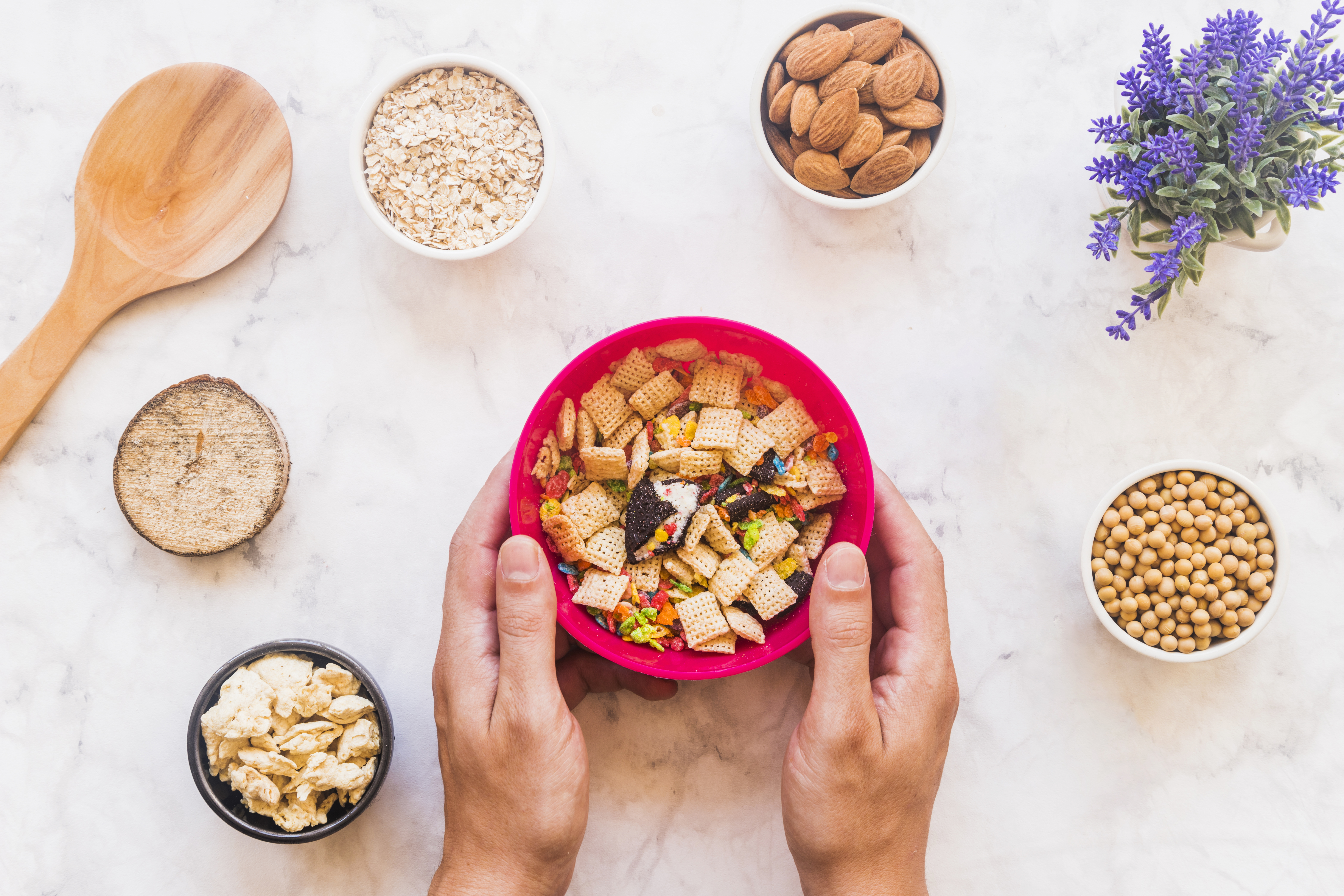-1761553362701.png)
What Is Fibremaxxing? Decoding The Newest Nutritional Trend
Say bye to restrictive diets and ephemeral supplements. The chicest new term in metabolic health isn't about what you remove—it's about what you increase. Welcome to the era of Fibremaxxing, a non-negotiable wellness trend focused on maximizing your dietary fibre intake. This isn't merely a fad; it improves gut health, promotes digestion, and gives a radiant glow that starts from within.
"Fibremaxxing is a conscious effort to 'max out' daily intake of dietary fibre through whole foods rather than relying on quick fixes," explains Dr Yashawant Kumar, Founder & CEO of Benefic Nutrition. "It's about building a foundation of wellness so solid, your body barely remembers the word 'bloating'," he adds.
What Is the Daily Recommended Intake of Fibre?
While most people fall alarmingly short, the goal of Fibremaxxing is to consistently hit and even surpass the ideal daily recommendation, focusing on diverse, fibre-rich options like fruits, vegetables, whole grains, pulses, nuts, and seeds.
"The Indian Council of Medical Research (ICMR) recommends a daily fibre intake of 40 grams per day for adults," Dr Kumar notes, adding that despite India's fibre-rich culinary heritage, modern dietary intake is falling short of the required daily amount.
According to the study published in the Journal of Clinical Epidemiology in 2020, the average fibre intake in urban India dropped to just 10-15 grams per day, which means the urban Indian population is facing a 'fibre gap'—a massive shortfall adding to the problems of rising lifestyle diseases.
1
2
3
4
Deepalakshmi Sriram, Registered Dietitian at Sree Balaji Medical College & Hospital, Chennai, adds that adult men should consume 30-38 grams of fibre per day, while women should have 21-25 grams per day.
Don't miss: 10 Fibre-Rich Foods To Improve Your Digestion

Soluble vs. Insoluble Fibre
According to Gargi Sareen, Head Nutritionist at Sova, fibre is broadly classified into two types—soluble and insoluble—and both play an important yet distinct role in maintaining gut and overall health.
"Soluble fibre dissolves in water to form a gel-like substance in the gut, which helps slow digestion, regulate blood sugar, and lower cholesterol levels. It also acts as food for beneficial gut bacteria, supporting a healthy microbiome," Sareen says, adding that foods rich in soluble fibre include oats, flaxseeds, chia seeds, apples, citrus fruits, barley, and legumes like beans or lentils.
"On the other hand, insoluble fibre does not dissolve in water; it adds bulk to stool, helps waste move efficiently through the digestive tract, and prevents constipation," notes Sareen. "Common sources include whole wheat, nuts, seeds, vegetables, wheat bran, and the skin of fruits and vegetables," she adds.
Don't miss: 5 Health Benefits of Fibre-Rich Foods
What Are the Benefits of Fibre?
According to Dr Kumar, the benefits of fibre are immense, especially in the Indian context where lifestyle diseases are skyrocketing.
Helps in Blood Sugar Levels: As India is the 'Diabetes Capital of the World', fibre is crucial. Soluble fibre helps in slowing down sugar absorption. Making a switch from white rice to brown rice, jowar roti, or oats can make a significant difference.
Boosts Heart Health: Soluble fibre helps reduce bad cholesterol (LDL). Include beans, oats, millets, and flaxseeds for a heart-healthy diet routine.
Fights Constipation: Urban sedentary lifestyles and high processed food intake is adding to digestive trouble. Insoluble fibre adds bulk, while the prebiotic effect of soluble fibre helps increase good gut bacteria, which aids in smooth digestion.
Supports Weight Management: Fibre-rich foods like whole grains, dal, and salads keep you feeling full for longer, reducing cravings for sugar and carbohydrates, and lowering overall calorie intake, thereby preventing obesity.
Reduces Cancer Risk: Some studies suggest a diet high in fibre could lower the risk of colorectal cancer, which is especially increasing in urban India.

How to Fibremaxx Effortlessly
Fibremaxxing doesn't require expensive imported ingredients; you can incorporate this trend using simple, high-impact choices, according to Dr Kumar.
Start with Oats: Ditch the sugary processed cereals. Begin your day with a bowl of oats, millets, or a chia seed pudding topped with fresh fruit and nuts.
The Great Grain Swap: When making your daily roti or rice, replace refined grains (like maida or white rice) with whole-grain atta, brown rice, or millets (like jowar or ragi). Start with a 50:50 mix and transition slowly.
Embrace Legumes: Consume at least one bowl of dal (lentils) every day. Add nutrient-dense pulses like rajma, channa (chickpeas), or lobia (black-eyed peas) to your curries and rice dishes.
A Half-Plate Rule: Make vegetables (sabzi) your main affair. Fill half your plate with vegetables at every meal. Try not to peel produce like gourds or cucumbers, as the skin is rich in insoluble fibre.
Snack Smart: Prioritise whole fruits, especially those with the skin on (apples, pears, guava). Replace processed chips with nuts, seeds, or roasted chana (chickpeas).
Hydrate to Activate: Fibre needs water to move efficiently. Ensure you are drinking enough water throughout the day; otherwise, high fibre intake can lead to discomfort.
"For some individuals with specific gut imbalances, or who find it difficult to meet the 40-gram goal through food alone, targeted psyllium husk (isabgol) or personalized fibre formulations can help bridge those nutritional gaps," concludes Sareen.
Image courtesy: Freepik
For more such stories, stay tuned to HerZindagi.
Herzindagi video
1
2
3
4